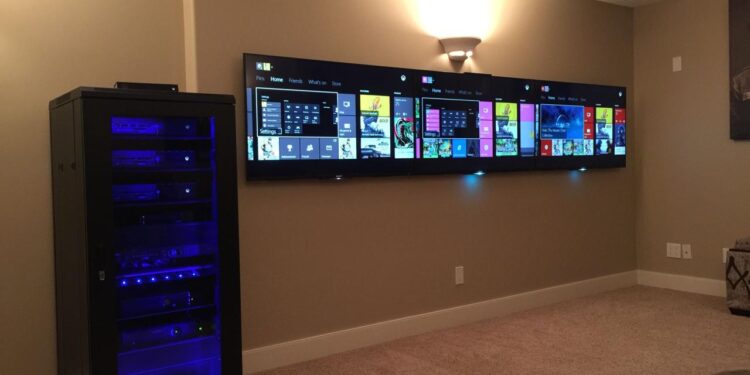In an age dominated by subscription-based streaming services, our entertainment is fragmented across a dozen different platforms, each with its own rotating content library, data caps, and strict digital rights management. The freedom to watch what you want, when you want, and on your own terms seems to have been lost. However, a quiet revolution has been building in the homes of tech enthusiasts and media connoisseurs—the personal media server. A media server is a centralized digital hub that allows you to store, organize, and stream your entire collection of movies, TV shows, music, and photos to any device in your home or even anywhere in the world.
This comprehensive guide is your definitive blueprint for building the ultimate media server. We will go beyond a simple hardware list, exploring the core philosophies of media server ownership, the crucial components that dictate performance, and the powerful software that transforms a collection of files into a stunning, intuitive, and highly personalized streaming service. Our goal is to empower you to reclaim control of your media, ensuring that you have a permanent, high-quality, and reliable entertainment library that is truly yours.
The Media Server Revolution

Building a media server is a liberating experience that offers a multitude of benefits that traditional streaming services simply cannot match.
A. Take Control of Your Content:
When you stream content from a service, you don’t own it. It can be removed from the platform at any time without warning. With a personal media server, you have a permanent library that you own and control. The movies and TV shows you love will always be there, ready to watch, regardless of a service’s licensing deals or content purges.
B. Save Money and Time:
The cost of multiple streaming subscriptions adds up quickly. A media server, while having an initial hardware cost, is a one-time investment that pays for itself over time. You are no longer paying for a rotating selection of content, but for a permanent library that you can enjoy for years. Additionally, you save time by having all your content in one central location, eliminating the need to search across multiple apps.
C. Stream Without Limits:
Traditional streaming services often compress content to save on bandwidth, resulting in a loss of quality. They also require a fast and stable internet connection. A personal media server streams content over your local network, allowing you to enjoy pristine 4K movies with full HDR and high-fidelity audio, without any buffering or data limits. You can even enjoy your content offline, a critical advantage for those with unreliable internet.
D. Organize and Discover Your Library:
Software like Plex and Jellyfin automatically organizes your library, adding beautiful posters, rich metadata, movie trailers, and actor information. It turns a chaotic collection of files into a stunning, searchable, and intuitive library that rivals the best commercial streaming services. You can easily find and discover new content with personalized recommendations based on your viewing habits.
The Core Components
The performance and reliability of your media server are a direct result of the hardware you choose. It is crucial to understand the role of each component and invest wisely.
A. The Central Processing Unit (CPU): Transcoding is Key
The most important job of a media server is transcoding. Transcoding is the process of converting a video file from one format to another on the fly. This is essential when a client device (e.g., a smartphone or a smart TV) cannot play the original file directly. A powerful CPU is required to handle this process.
- Intel Quick Sync Video: For most media server builders, Intel’s Quick Sync technology is a game-changer. It is a dedicated chip on the CPU that handles hardware transcoding with incredible efficiency, allowing you to transcode multiple 4K streams with minimal CPU usage. A modern Intel Core processor is often the best choice for a media server.
- NVIDIA GPUs: A dedicated graphics card from NVIDIA is a powerful alternative for transcoding, especially for users with very demanding workloads. However, they are more expensive and consume more power than a CPU with integrated graphics.
- AMD CPUs: While excellent for desktop computing, AMD CPUs have historically been less efficient for hardware transcoding than their Intel counterparts. However, their integrated graphics solutions have improved significantly in recent years.
B. The Memory (RAM): The Working Space
A media server does not require a massive amount of RAM. For a dedicated Plex or Jellyfin server, 8GB is a good starting point. However, if you plan to run other services on the same machine (e.g., a virtual machine or a home automation platform), upgrading to 16GB is a smart investment.
C. Storage: The Digital Vault
Your storage solution is where your entire media library lives, and it must be reliable and scalable.
- HDD (Hard Disk Drive): HDDs offer the best price-per-gigabyte ratio and are the ideal choice for storing your bulk media files. Look for high-capacity drives (4TB or more) from reputable brands.
- SSD (Solid-State Drive): Use a small SSD (128GB to 256GB) for the operating system and the media server’s metadata. This will ensure lightning-fast boot times, a snappy user interface, and quick access to your library’s information.
- Redundancy (RAID): Hard drives will fail; it’s a matter of when, not if. Building a RAID array (Redundant Array of Independent Disks) is a critical step to protect your data.
- RAID 1 (Mirroring): Duplicates your data on two drives. If one fails, the other takes over, and your data is safe.
- Unraid: An increasingly popular alternative that combines the benefits of RAID with the flexibility of using different-sized drives. It is perfect for a media server where you will be adding drives over time.
D. The Case and Power Supply:
The case is more than just a box. It should have:
- Ample Drive Bays: Ensure your case has enough drive bays to accommodate your current and future storage needs.
- Good Airflow: A server that runs 24/7 generates heat. A case with good airflow and fan mounts will keep your components cool and extend their lifespan.
- Power Supply (PSU): Choose a reliable, energy-efficient power supply from a reputable brand. A good PSU will provide a stable power flow and save you money on your electricity bill.
The Media Server Ecosystem
The hardware is just a box of parts without the right software. The following platforms are the engines that bring your media server to life.
A. Plex: The King of Media Streaming
Plex is the most popular media server platform for a reason. It is renowned for its beautiful user interface, its vast library of official client apps, and its seamless user experience.
- Features:A. Stunning UI: Plex automatically adds stunning posters, detailed synopses, and movie trailers to your media, transforming a simple file list into a gorgeous, magazine-like interface.B. Wide Client Support: Plex has official apps for virtually every platform imaginable, including smart TVs, gaming consoles, smartphones, and streaming sticks.
C. Plex Pass: A premium subscription that unlocks powerful features like hardware transcoding, mobile sync, and live TV.
B. Jellyfin: The Free and Open-Source Champion
Jellyfin is a rising star in the media server world. It is a free and open-source alternative to Plex that gives you total control over your media.
- Features:A. Total Control: There are no subscription fees or licensing agreements. You are in complete control of your data and your server.B. Privacy-Focused: As an open-source platform, Jellyfin is a great choice for users who are concerned about privacy and do not want their data shared with a third-party company.
C. Active Community: Jellyfin has a passionate and active community that provides support and contributes to the platform’s continuous development.
C. Operating System (OS): The Server’s Foundation
The OS is the software that runs your server.
- Linux: A lightweight, secure, and free OS like Ubuntu Server is an excellent choice for a media server. It has low overhead and a massive community for support.
- Windows: A good choice for beginners who are more comfortable with a familiar graphical user interface.
- Dedicated OSes: Solutions like TrueNAS or Unraid are operating systems built specifically for storage and media server applications. They simplify the process of setting up storage and running server software.
The Build Process

Building a media server can be a fun and rewarding project. Here is a high-level overview of the process.
A. Step 1: Planning and Component Selection.
As outlined in the previous sections, this is the most important step. Define your use case, set a budget, and choose your components based on your specific needs for transcoding, storage, and ease of use.
B. Step 2: Assembly and Initial Setup.
Assemble your PC just like a standard desktop. Install the motherboard, CPU, RAM, and storage drives in the case. Ensure all cables are connected properly and that you have ample airflow.
C. Step 3: Operating System Installation.
Install your chosen OS from a USB drive. If you are using Linux, the process is straightforward and can be done from the command line. If you are using Windows, the process is just like installing Windows on a desktop PC. For TrueNAS or Unraid, the installation process is even simpler.
D. Step 4: Server Software Installation.
Once the OS is installed, install your media server software (Plex or Jellyfin). This is the final step. The software will walk you through setting up your media library, pointing to your media files, and beginning the process of scraping metadata.
Advanced Media Server Techniques
Once your server is up and running, there are a number of advanced techniques you can use to optimize your setup.
A. Remote Access and Security:
To stream your media to your smartphone or a friend’s house, you need to set up remote access. This can be done by configuring port forwarding on your router. For added security, consider using a VPN (Virtual Private Network) or a reverse proxy.
B. Automation with Sonarr, Radarr, and Lidarr:
For the ultimate in convenience, you can use automation tools to manage your media library.
- Sonarr automates the process of downloading and organizing TV shows.
- Radarr automates the process of downloading and organizing movies.
- Lidarr automates the process of downloading and organizing music.These tools ensure that your library is always up-to-date with new content.
C. Optimizing for 4K and HDR:
4K and HDR content are very demanding. To ensure a smooth streaming experience, you need to:
- Direct Play: Configure your client devices to “direct play” the original file whenever possible. This avoids transcoding and places no load on the server.
- Powerful Transcoding: If direct playing is not an option, ensure your server’s CPU or GPU is powerful enough to handle the transcoding.
Conclusion
The ultimate media server is not a single piece of hardware or a single software package; it is a holistic system that is perfectly tailored to your entertainment needs. It is a strategic investment that frees you from the limitations of commercial streaming services and gives you a level of control, quality, and permanence that is simply unattainable otherwise. By building your own media server, you are not just creating a place to store files; you are building a personalized entertainment command center, a digital vault that holds your cherished memories and a library of your favorite movies and shows.
The journey begins with the hardware, a careful balance of CPU power for transcoding, ample storage for your ever-growing library, and redundancy to protect your data. It continues with the software, where powerful platforms like Plex and Jellyfin transform a chaotic collection of files into a stunning, intuitive, and highly organized library. And it is made complete by a commitment to managing and optimizing your server to ensure a seamless, lag-free experience for everyone on your network.
In a world of fragmented content and ever-increasing subscription fees, a personal media server stands as a beacon of digital independence. It is a rewarding project that empowers you to be the master of your own media and a testament to the fact that the best entertainment experience is the one you create for yourself.












